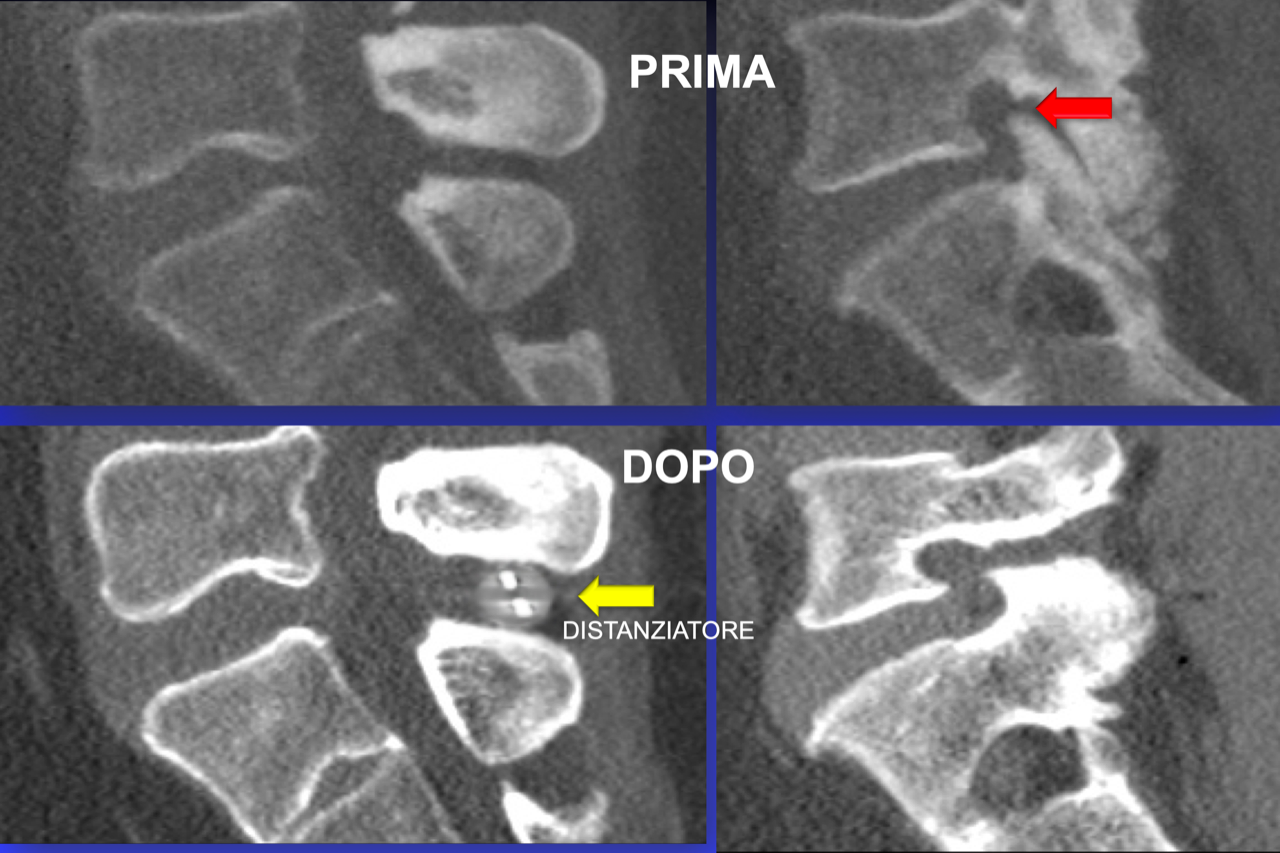
The "soft" stenosis of the vertebral canal is a pathological condition generally due, in the context of a congenital reduction of the width of the vertebral canal where the nerves that go to the lower limbs pass, to an excessive approach of 2 or more vertebrae, usually secondary to a discopathy, or to a vertebral listesis, that is, to a vertebral misalignment. The reduction in the distance between 2 vertebrae causes a relaxation of the elastic ligaments usually tense between the vertebrae: the ligaments therefore press on the nerve roots with consequent chronic worsening radiculopathy.
Symptoms The disease is responsible for alterations in the sensitivity of the lower limbs (paresthesias, tingling, burning pain, night cramps, electric shock) associated with a progressive reduction in the patient's ability to walk, which typically complains about the impossibility of making a previously habitual journey without having to "stop and rest".
Minimally invasive therapy In most patients the dilation of the vertebral canal or foramina is obtained by inserting, in simple local anesthesia and guided CT scan, a small "spacer" between the vertebrae, which restores the normal vertebral distance and the caliber of the nervous foramina, with the disappearance of pain in the limbs lower. The surgery has an average duration of about 30 minutes, and does not require any rehabilitation after the patient is discharged.

No general anesthesia, no risk of deep scars, reduced surgery and hospitalization times.
LEARN MORE +